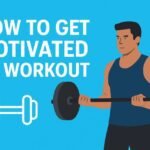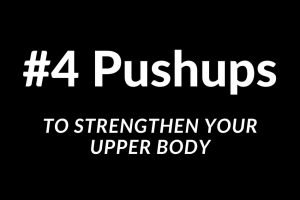Different Types of Superset for Strength Training Intensity
Are you hitting the gym regularly? Is it true that it’s been a year or two that drinking whey protein and hitting weights became a routine of your life? If it’s YES, then there’s a high chance that you might have come across a term called: superset. Yes, it’s one of the first strength training methods that most of the newbies learn.
But saddening part is that most people have no idea how to pair superset movements in the right way and end up doing it without giving proper thought on the logic behind the pairing of exercises for superset method. However, if you’re not aware of this term – supersets, then don’t worry, we’ll cover that too.
What’s Superset?
A superset is one form of strength training method where two exercises are done back-to-back without any resting period in-between – usually taken for catching your breath or grabbing a drink of water in-between sets of an exercise. In other words, one set of superset consists of two different exercises, and the rest is taken after both of them are completed.
Nonetheless, there’re different types of superset methods, due to which it can be performed differently. Let’s take a holistic look at different types of superset methods, which can help you make your workout more enjoyable and intense.
Different Types of Superset for High-Intensity Performance
Let’s take a look at below different types of supersets you can use for avoiding confusion on how to pair two exercises for better results.
- Pre-Fatigue Superset
- Post-Fatigue Superset
- Antagonist Superset
- Isolation Superset
- Compound Superset
Pre-Fatigue Superset
Pre-fatigue superset refers to performing two different exercises for the same muscles. Here, the first chosen exercise is an isolation exercise, and the second exercise is a compound exercise.
- Isolation movement – Targeted muscle is doing most of the work.
- Compound movement – Multiple muscles get activated along with the targeted muscle.
The main reason to choose the pre-fatigue technique is that in a compound movement exercise, multiple muscles get involved, and the targeted muscle doesn’t work alone at its full potential, which means it’s not fully stimulated at the end of the set. For instance, if you pre-fatigue your chest with an isolation exercise, let’s say Dumbbell Fly. You’ll feel much more intensity in the compound exercise such as Barbell Bench Press, which in return will teach you how to focus on the targeted muscle. However, it does have a disadvantage that you won’t be able to lift heavyweights in the compound exercise, so it’s best to keep your ego at the door.
Examples of Pre-Fatigue Exercises
- Chest – Dumbbell Fly with Inclined Bench Press or Flat Bench Press.
- Back – Hammer Rows or Machine Lats Pull-down with Bent over Barbell Rowing.
- Legs – Leg Extensions or Hack Squats with Squats.
- Shoulders – Dumbbell Side Lateral Raise or Front Dumbbell Raise with Overhead Shoulder Press.
- Biceps – Concentration Curls with Dumbbell Curls or Barbell Curls.
- Triceps – Dumbbell Triceps Kickbacks or Triceps Rope/Cable Pushdowns with Lying Triceps Extensions.
Post-Fatigue Superset
The post-fatigue superset is the opposite of the pre-fatigue superset, which takes your pain to a whole new level. Here, two exercises are done back-to-back where first it takes a compound exercise followed by an isolation exercise as a second one. It helps to fully stimulate the targeted muscle, while not interfering with the amount of weight you’re capable of doing on the compound exercises.
Examples of Post-Fatigue Exercises
- Chest – Barbell Bench Press superset with Dumbbell Fly.
- Back – Barbell rowing superset with Straight arm Lat pulldown.
- Biceps – Chin-ups superset with Cable curls.
- Triceps – Close grip bench press superset with triceps pushdowns.
- Shoulders – Military barbell press superset with Dumbbell laterals.
- Legs – Squats superset with leg extension, Romanian deadlift superset with leg curls or Standing calf raises superset with seated calf raises.
Antagonist Superset
Antagonist superset means you do back-to-back exercise of two opposite muscle groups like biceps and triceps, quads and hamstrings, chest and back. It’s one of the effective superset techniques for relaxing one muscle while contracting the antagonist. For example, when your quads are contracted, hamstrings will stay in a relaxed mode. One of the advantages you’ll find with this technique is that you’ll be able to lift at your potential or some extra reps for both the exercises performed.
Examples of Antagonist Exercises
- Biceps & Triceps
- Quadriceps & Hamstrings
- Chest & Back
- Front Deltoid & Rear Deltoid
- Abs & Lower Back
Isolation Superset
Isolation superset technique is used for pairing two different exercises for the same muscle. The reason for using this technique is to concentrate on different parts of one particular muscle. For instance, one exercise of bicep works on the long head, and the second exercise works on short head. The tricky part is that for taking benefit of this technique, you’ve to select exercises that work on different parts of the muscle. If you choose two exercise movements that work in the same area, then you won’t get any value from this superset technique.
Example of Isolation Superset
- Chest – Dumbbell flies superset with Cable crossover.
- Bicep – Concentration curls superset with Preacher curls.
- Triceps – Overhead dumbbell extension superset with Cable pushdowns.
- Back – Straight arm pulldown superset with Seated back extension.
- Shoulders – Dumbbell front raise superset with Dumbbell side raises.
- Legs – Leg extensions superset with Seated leg curls
Compound Superset
Compound supersets mean two compound exercises of the same muscle group. It’s mostly used by the advanced trainer as heavyweights are used for both the exercise, which results in heavy CNS (Central Nervous System) stress. Its least used as it doesn’t let you concentrate on the target muscle group. For instance, compound superset for chest can be bench press and dips, and if your triceps are stronger than your pectoral, you’ll rarely activating your pectoral in both the movements and chest won’t be stimulated as it has to be.
Example of Compound Superset
- Chest – Barbell bench press superset with Weighted dips.
- Back – Barbell bent over rows superset with T-bar rows.
- Bicep – Reverse grip chin-ups superset with One-arm hammer row.
- Triceps – Close grip bench press superset with Triceps French press.
- Shoulders – Overhead shoulder press superset with Arnold press.
- Legs – Lunges superset with Wide stance squats.
Benefits of Supersets
It’s suggested that you change your Workout after two to six weeks to avoid plateaus, and superset is one of the ways which can help you break it. If you’re looking for a change, then it’s one of the must-do. Some of the benefits you get are:
Saves Time
It’s no brainer going from one exercise to another without taking any break in between does makes your Workout shorter.
Increased Intensity
By choosing supersets for the same muscle group but with different exercises, the intensity of your Workout will be increased, which will help in recruiting muscle fiber differently, so you’ll get the feeling of a whole new set of exercises.
Overloads Muscles
Hitting the same muscle group from one exercise to another that results in overloading muscles without heavyweights. It’s one of the suggested ways if you don’t have a spotter, or you’re not interested in lifting heavyweights.
Makes Your Workout Interesting
If you’re doing straight sets from long-time, supersets can make your workout routine interesting as well as challenging.
Gives Variety Into Your Workout
You don’t need to superset the same muscle group. You can even go for opposite muscles or two completely different body parts.
The Best Superset Workout
As per me, it must be specific, which includes sets, reps, exercises, rest, etc. The best superset workout routine should also have a high level of intensity while managing time and it should be in a rep range that promotes hypertrophy.
Which Muscle Groups Responds Better to Supersets
- Arms – It responds well when you superset with different techniques. For instance, a superset of biceps and triceps gives better results like barbell curls with weighted dips.
- Chest & Back – These muscle groups also work effectively. For example, bench press superset with pull-ups.
- Legs – you can superset leg press with leg curls, and leg extensions with glute-ham raise.
Every person responds differently, so it’s best to try out the superset as mentioned earlier and implement the one often, which seems more effective to you.
The Best Rep Range for Superset Exercises
Several reps ranges work well with superset exercises, but its best to go with the ones that work well with functional hypertrophy, which is 5-10 Reps. If you’re focusing on compound superset, then 5-8 Reps works well, and a rep range 8-10 is best for isolation exercises. However, a periodization approach is best as it keeps your body guessing about it.
Example:
- Week 1 to 2: 4 Sets x 10 Reps
- Week 3 to 4: 3 Sets x 10 Reps
- Week 5: 3 Sets x 8 Reps
- Week 6 to 7: 5 Sets x 6 Reps
- Weeks 8 to 9: 5 Sets x 8 Reps
- Week 10: 2 Sets x 12 Reps
Isolation or Compound: Which Is Suggested
Superset works best when it’s used with one compound movement and one isolation movement. Mainly because it caters to all levels of trainees whereas, a superset of a compound exercise with another compound exercise will stress out the CNS, and many beginner or intermediate trainees won’t be able to handle such stress and level of intensity.
Also, superset exercise of a compound movement along with an isolation movement works best for pre-exhaustion or post-exhaustion and superset with isolation movement first, and then compound movement works differently.
Again, if you’re someone who loves the intensity and likes to give every bit of your into the gym, then compound superset can also work better, but it would be better to give it a try once you ‘ve at least a year of experience.
Closing Thoughts
If you’ve some experience and you’re taking your lifting seriously, then superset is something you must try. If you haven’t tried before, then it’ll also help you break those plateaus, which hinder your muscle growth. To sum up, it’ll give many other benefits as discussed above, such as managing your gym time better, adding intensity, and many others.






